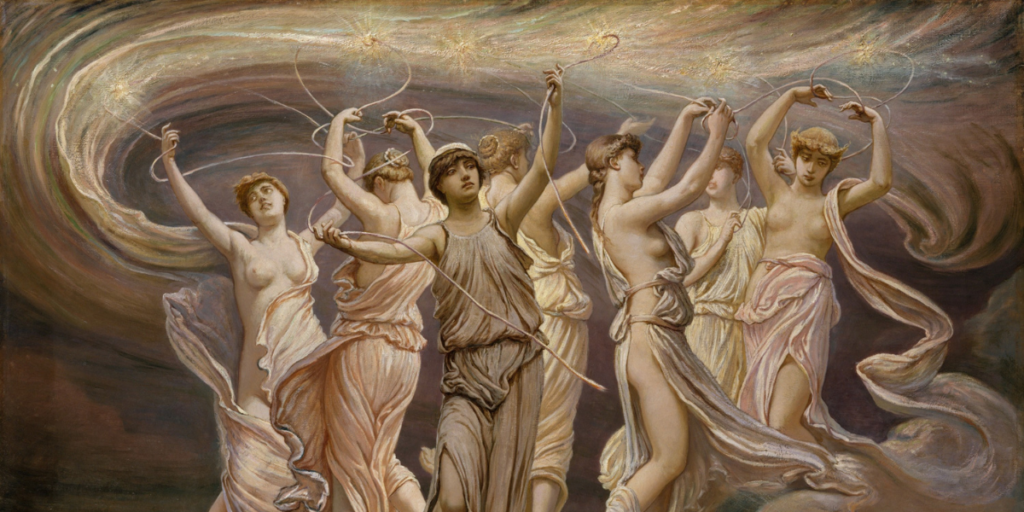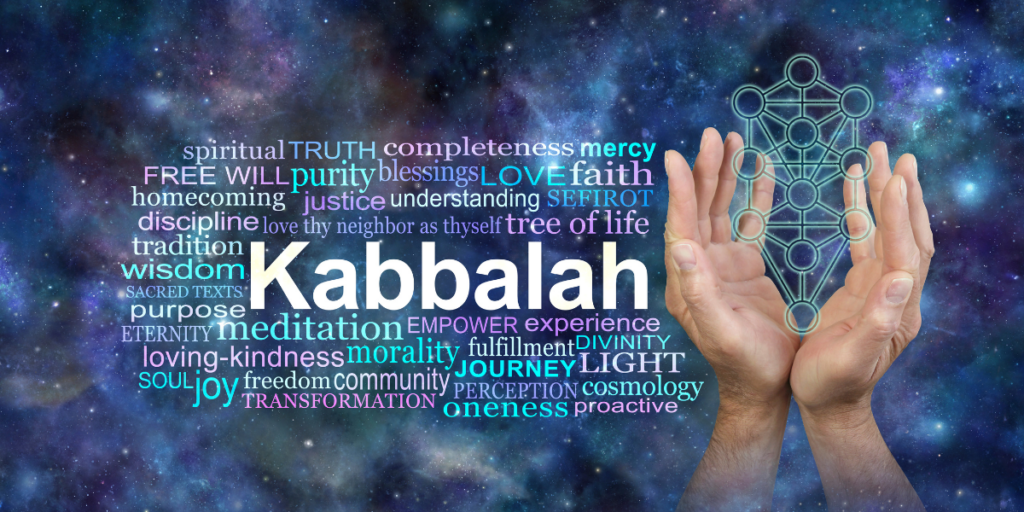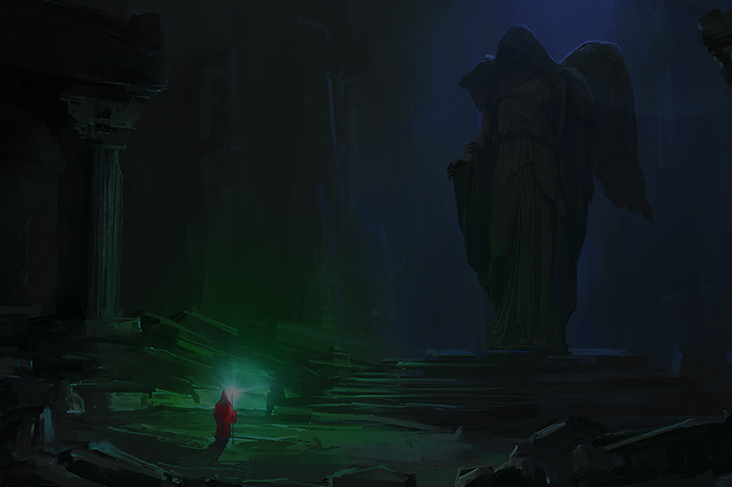A game that quickly became a cultural phenomenon, the Elden Ring stretches the imagination of the player while creating a mosaic of myths and legends. In this blog post, we’re going to walk the desolate Lands Between, fight the Outer Gods, and find a powerful “artefact” able to weave the fate of the cosmos.
If you’ve been reading my posts for a while now, you already know that I have no issue delving into unique and weird mythopoeic narratives, often having nothing to do with what most people consider “classical mythology”.

The reason is simple: I view mythology as another living, breathing mode of expression. There’s little difference between modern and ancient stories. Human nature hasn’t changed after all.
In any case, games offer a unique opportunity for the “scholar” to throw themselves into an alien world and slowly live the experience of the mythos. From Assassin’s Creed: Odyssey to The Witcher, there have been plenty of instances where games brought a truly unique interpretation of mythology in the 21st century.
This kind of mythopoeic dramatization is what can ignite youth’s burning desire to unearth the hidden insights of their psyche.
And come to think of it, perhaps no one has done a better job than Hidetaka Miyazaki.
I have to admit that I’m not a big gamer. While I obviously appreciate the medium, the time investment doesn’t make sense at this point in my life (someone needs to write these posts, you know…)
But, when I see an interesting title related to a book franchise or rooted in ancient mythology…
I spend a few days glued in front of the screen, losing all track of time!
Personally, the steep learning curve of Dark Souls never let me enjoy the story-telling aspect. The Elden Ring seemed to be different.
I became interested in the game when I heard of G.R.R Martin’s involvement. The author of A Song of Fire and Ice knows his history and never shies away from infusing his novels with primordial concepts. Of course, the overarching plotline of Miyazaki is well-known to fans of Soul-like games. In that regard, Elden Ring is his magnum opus!
Their combined vision is what made the game so unique.
Syncretic Mythology

It’s one thing to copy-paste and repackage ancient mythology using different terms and names. But it’s ART to remove the abstraction and form of The Myth and weave a story using the core elements and principles.
The Elden Ring takes bits and pieces from multiple sources; Norse and Greek mythology, alchemy, Christian theology, Kaballah, Lord of the Rings, Lovecraft, etc.
The result is a gargantuan universe with a vast history and a complex cosmogony. It’d be impossible to break down every single thing in this article. What I can do is provide a springboard for further exploration.
So, first things first:
The Lore of the Elden Ring in 101 Words
You find yourself in the Lands Between, after the destruction of the Elden Ring. You’re named a Tarnished, a lost soul slowly making its way back to the desolate, barren lands. Your goal? To collect the shattered pieces of the Elden Ring named Great Runes, and make it whole again, thus becoming the Elden Lord.
But you have to overcome many obstacles, including the unseen power of the Outer Gods, the corrupted demi-gods holding the Great Runes, and other Tarnished seeking Godhood themselves.
Marika, vassal to the Greater Will – the ruling Outer God – looms over the world, influencing your every move.
See? It’s quite a bite! Each concept and footnote matters, creating a rhizomatic underbelly to seemingly unrelated concepts, places, and characters.
When I first delved into the Elden Ring mythology, I was perplexed. It wasn’t until I shifted my perspective, looking for the source material that inspired the developers, that the puzzle piece fell into place.
Christian Theology in the Elden Ring

So, there are numerous layers to the plot of the Elden Ring. Each one builds on the previous one. But at the top, a Christian hermeneutic stands.
Of course, Christianity itself often integrated concepts from ancient religions and pagan traditions. But for now, we’ll use the Bible and Christian mysticism as our parallel reading.
For me, the Elden Ring is the fall of humanity from the grace of God. The Edenic paradise was “tarnished” by disobeying the Greater Will, the Will of God.
The Tarnished, the Fallen, must walk the Lands Between (a more hellish type of Earth) and ascend back to unity. The Erdtree is arguably the Tree of Life, while the destruction of the Elden Ring is the propatorical sin.
(There’s a notable inversion here, where Marika removes the Death rune, thus removing death from life. We’ll discuss this more in a minute)
The Greater Will, infusing all life with its… Will, is molding the world as we know it.
Yet, this is where things get complicated. The Outer Gods are aliens to these lands. They aren’t creators necessarily. They can only create through the inhabitants of the planet. They need to split unity into dualism to cause action.
The Alchemical Vision of the Elden Ring
Alchemy goes all the way back to Ancient Egypt and continues to flourish until the late 18th century. In fact, many prominent historical figures have dabbled with alchemy, including Newton (yes, THAT Newton), John Dee (the original 007 agent), etc. To this day, many of the principles we use in chemistry have their roots in the mystical journey towards creating the lapis philosophorum; the elixir of life.
The Elden Ring took the esoteric side of the Great Science and used it to articulate the fundamental process of creation.
The alchemical process of splitting Unity into Two, then Three, then Four can be observed in how the One Great eventually became the four main Outer Gods.
Another hint is the relationship between Marika, Radagon, and Rennala. As I mentioned, from One came Two, the Son and the Moon. Radagon and Rennala, Sol and Lunna. But what about the Three?
Marikka in Finnish means Sea of Bitterness. And what makes the sea bitter? Salt! Which is the third principle in the alchemical process.
There are many many more associations between the Elden Ring and alchemy. Specifically, if we take a look at the Ripley Scroll, we’ll find all sorts of overlapping symbolisms.
For further research, I recommend this video first, then this.
Lurianic Kabbalah in the Elden Ring

OK, what’s Kabbalah you might ask. It’s a branch of Jewish mysticism that became prominent in medieval times and was slowly integrated into Christian mysticism and hermeticism.
It’s basically a tree representing reality, as well as the human soul. Like the Elden Ring, it contains the instructions, rules and everything informing how the world should be working.
When the Elden Ring was shattered, the Runes were scattered everywhere. Part of your quest is to collect them (ahem… Osiris mythology… *cough cough*). In Kabbalah, there are six partzufi, parts of our soul that command how your mind and body operate.
Not only that, there are four (main) Outer Gods in the Elden Ring competing for control. And you fight to fight their vassals, manifested into four power bosses. Guess how many “worlds” the Kabbalistic Tree of Life have? Four!
If we stretched the terminology a little bit (debatable whether Leyndell, the Royal Capital a region for example), we could also overlay the regions of the Lands Between unto the 10 Sephirot.
The last thing I want to mention is the idea of a “fallen world”. There’s a theory proposing that before our world, there was a failed divine experiment, resulting in the creation of evil. That evil is the Qliphoth.
In the Elden Ring, we see a rotting tree. It existed before the Great Tree grew roots and blossomed, and speaks of a world before the “alien” Gods arrived.
Of course, this is all speculative. But given the blatant alchemical symbolism in the game, it’s not far fetched given how Kabbalah and alchemy are intimately connected.
Norse and Greek Mythology in the Elden Ring
I was pleasantly surprised when the developers didn’t blatantly use classical mythology to make up for lack of imagination!
There are plenty of games and movies incorporating elements of ancient Greek and Norse mythology that another similar title would’ve been redundant.
What they did right was incorporating various elements here and there, creating a sense of depth and familiarity with the world.
For example, the aesthetics in different regions correspond with classical era Greece (see Nokron the Eternal City), while characters and monsters like dragons, giants, and wyverns are blatantly part of Norse mythology. And then there’s the giant tree at the core of everything (Yggdrasil).
There’s also a lot of Irish and Gaelic mythology involved in the creation of the world. Ranni is similar to Rhiannon and Marika to Dannu.
Given that Martin is responsible for the creation of the characters, it makes sense. He’s an arduous historian, plus he loves mythology.
Mythopoeic Sagas that Inspired the Elden Ring
I always got a sense that the Dark Souls games were inspired in some way by Lovecraftian mythology and Tolkien’s world.
The Elden Ring most certainly validates my hunch. Miyazaki and Martin are definitely borrowing these from these two great writers, and the result is nothing short of amazing.
I’ll give you two examples:
- The (alien) Outer Gods, commanding the fate of humanity, so powerful beyond human comprehension, remind of Lovecraft’s… Outer Gods! Yes, the name itself is more than a subtle hint, don’t you think?
- The Elden Ring shatters, the shard scattered across the world. If you read about the mythology behind the Silmarillion, you’d know that the fate of Arda will be determined by the lost jewels, the Silmarils lost within the lands of Middle Earth. And of course, we could make another comparison between the Ring of Power corrupts those who possess it and the Great Runes of the Elden Ring doing the exact same thing!
Of course, similarities don’t end here. From the visual representation of cities and races to the cosmic horror the player feels when faced with the power of a malevolent God, the writers of the game honor Tolkien and Lovecraft every step of the way.
Personal Theory about the Elden Ring (The Aliens)
This has been quite hard to write. I had to spend hours researching and distilling information to make the article readable! But it’s a complex game that requires a lot of exposition to understand what makes it so great.
Having said that, it was also very fun to write. I gained a new appreciation for what went into its creation.
Since you’re still here, I wanted to present my own theory about the world of the Elden Ring. Somewhat controversial but it’s necessary when doing such an analysis.
So here it goes:
The Great Tree is a parasite! In the beginning, I mentioned how Marika removes the Rune of Death from the Elden Ring to make death impossible. But in the game, you’re running around “killing” everyone in sight, right? Where do these people go?
The Tree is consuming them. That’s right! This isn’t speculation, it says so in the lore. The Erdtree unites their souls/energy with the cosmic unity, practically feeding on the soil of the Lands Between (why do you think there are so many catacombs?).
You have to remember that there was a whole world before the Tree sprouted roots and branches. The Greater Will arrived in that world on a comet. From my perspective, it is an evil alien parasite.
And like all parasites, it needs a host to survive. Marika recognized that and rebelled against it. Like Prometheus, she defied the divine will. She sought to become a God herself.
I ask you now, dear reader, isn’t apotheosis what humanity has been striving for since we raised fire to the skies, and burned the trees?
wink wink
